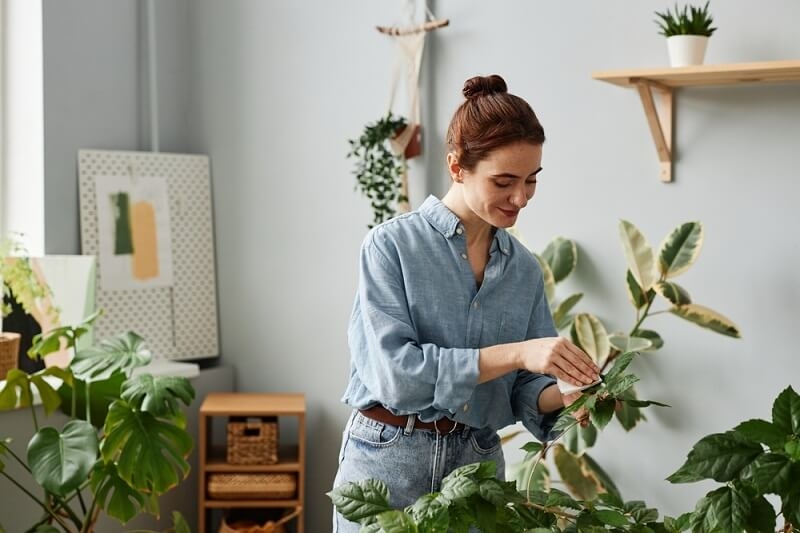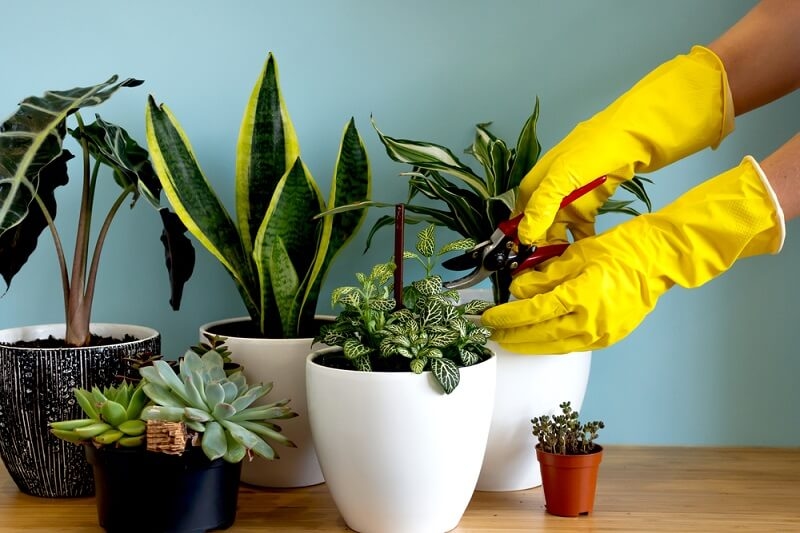
Indoor plant care is both an art and a technological knowledge. Learning a method to attend to indoor plants allows them to grow lush, healthy, and green while making your living space enjoy colorful and clean. Whether following a newbie indoor plant manual, perfecting your watering schedule for houseplants, or troubleshooting low-mild houseplant care, understanding the basics guarantees achievement. By warding off not unusual indoor plant mistakes to avoid and understanding what your flora certainly need, you’ll keep them thriving for years.
Caring for indoor plant life isn’t much like tending a garden exterior. Inside your private home, vegetation relies primarily on you to replicate the conditions they’d usually acquire from nature. That manner controls moderate, water, air glide, and nutrients. Indoor plant care requires mindfulness about how every one of those factors interacts.
You'll create a thriving indoor environment by getting to know the one elements.
When beginning your plant adventure, it’s tempting to grab something that seems beautiful at the nursery. But every plant no longer fits in each home. An amateur indoor plant guide continually emphasizes the significance of selecting species that fit your environment and lifestyle.
Choosing easy, adaptable plants builds self-belief whilst reducing the risk of failure.
Light is the most crucial component in caring for indoor vegetation. Without the right light, photosynthesis slows and weakens, and leaves might also yellow.
Rotate plants often so all aspects receive even publicity.
Sticking to the proper watering schedule is critical for keeping houseplants healthy and alive. Overwatering leads to root rot; underwatering causes plant stress and stunted growth. For most houseplants, it is exceptional to permit the soil to dry a bit between waterings. Each houseplant has distinctive watering wishes, and the watering timetable will vary based on pot size, plant type, humidity, and time of year.
Having a weekly watering agenda, checking for moist soil, and adjusting to environmental adjustments (temperature and humidity) will ensure houseplants continuously get the right amount of water, leading to deep roots and colorful foliage year-round.
Overwatering is one of the most common indoor plant errors to avoid. Developing a consistent watering schedule for houseplants keeps roots healthy and prevents rot.
For maximum flora, a weekly check is enough. Tailor your watering time desk for houseplants to the perfect species you have.
Choosing the proper soil and fertilizer is fundamental to growing healthy indoor plants. You need to use accurate, draining potting mixes for houseplants, which can prevent waterlogging and root rot. Every indoor plant may also require different sorts of soil; for instance, you may need a cactus blend for cacti and succulent flora or a peat base for tropical plant life.
Be positive about fertilizing frequently for the energetic growing season, but back down at some point of dormancy based on the type of plant. Regular fertilization leads to healthy roots, lush foliage, and colorful flora, and retaining your indoor flora healthy might be much less onerous and more pleasing.
Soil is more than dirt—it’s the foundation of plant fitness. Proper indoor plant care involves deciding on the proper potting mixture.
Use fertilizer every 4–6 weeks at some stage in the growing season. Stop feeding throughout wintry weather dormancy to avoid buildup and strain.
Many popular houseplants are tropical, which means they crave humidity and heat. Central heating and air conditioning can strip moisture from the air, stressing your plant life.
Keep temperatures constant between 65–75°F for most species. Avoid setting plants near drafts or heat vents.
Every amateur makes mistakes, but knowing common indoor plant mistakes to avoid will save frustration.
By being mindful of those indoor plant mistakes to avoid, you can preserve your vegetation robust.
Not every domestic has high-quality, sunny domestic windows. Fortunately, many species are ideally suited for low-light houseplant care.
Remember: “low mild” doesn’t suggest “no moderate.” Even shade-tolerant plant life needs some indirect or artificial light.
Even the healthiest flora can be enchanted by pests. Spotting issues early is key.
Healthy indoor plant care practices save you from most infestations before they start.
Indoor flora don’t comply with the equal rhythms 12 months-round. Your approach to caring for indoor flowers must shift with the seasons.
Observing those herbal rhythms prevents strain and promotes long-term growth.

Once your plant life is installed, it will eventually outgrow its pot or need pruning.
This keeps flowers bright and stops root binding.
A big secret to knowing how to care for indoor plants is a routine.
Consistency builds plant health and makes caring for indoor plants very easy.
Mastering indoor plant care techniques, balancing moderate water, soil, and light. You'll avoid common indoor plant errors with a novice indoor plant guide, a regular watering time table for houseplants, and conscious low-mild houseplant care. Healthy, colourful houseplants will reward your efforts with splendor and existence in every corner of your private home.
This content was created by AI